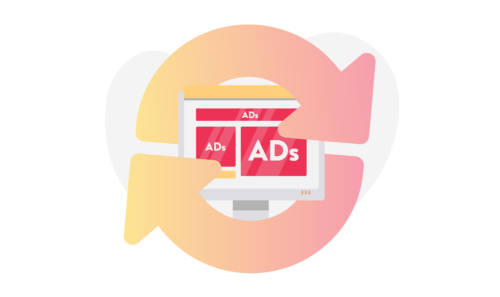The Ultimate Guide to Rich Media Ads
Rich media ads can be defined in a variety of ways, with their own spectrum of colorful interpretations that are not necessarily always drawn from the online advertising ecosystem. For some, not familiar with digital marketing, the term could mean expensive multimedia campaigns and for others it connotes unconventional and flashy art creatives. This is somewhat true, although to properly kick off with this article let’s take a quick look at what one of the most important players of online advertising has to say on this matter.

According to Google, rich media are “ads that include advanced features like video, audio, or other elements that encourage viewers to interact and engage with the content.”
There are several types of web page advertisement formats where some of the most popular examples include video instream and outstream; text ads, also known as natives; as well as display ads, such as banners, sky scrapers, halfpages and rectangles that present pictures as their key visuals. Rich media is more complex, considering that it reaches far beyond the technological boundaries of the aforementioned advertising solutions. Rich media ads have their own range of specifications and categories. They float, expand, dim, play video files, stretch across the entire screen or combine aspects of gamification or ecommerce; all in order to increase the engagement of the end user.

The predominant technology used for the creation and setup process of rich media ads is HTML5, which is a mark-up language used for structuring and presenting content for the web and a core technology of the Internet. The performance of rich media ads is known to be over the top, which explains their setup complexity and sumptuously suggestive name. The results of rich media ads are capable of outperforming regular video and display ads via the achieving of higher metrics such as click through rate, viewability or conversions, that are all chased by advertisers working with ambitious goals driven by brand awareness and customer satisfaction.

In the modern era of online advertising, we frequently hear opinions that rich media ads are aggravating and irritating. This type of ad format is usually associated with internet users’ biggest nightmare, pop up ads. There are rich media solutions that interfere with user browsing experience; although if implemented appropriately this case scenario can be diminished and avoided altogether.
The main intent of rich media ads is to engage the user with stimulating content, and this does not have to automatically translate into full domination and the interruption of browsing experience. Publishers are not very fond of rich media ads due to the plethora of unprofessional solutions already available on the market. It is easy to get carried away with available technology in the hopes of maximising profits for all stakeholders. Thankfully, the online advertising industry is taking steps to prevent the spread of rich media malpractice at its planning and execution phases.

The Interactive Advertising Bureau also known as the IAB has set out rules and standards that apply across all web page advertising formats, including rich media. The goal of these standards is to prevent rich media providers from crossing the line of user experience satisfaction. One of IAB’s most prominent projects within this brief is called The New Ad Portfolio, which emphasises and promotes the faster load performance of ads and non-disruptive ad content, all based on the following three principles:
Control: the consumer has control over their advertising experience
Respect: the consumer’s primary objective is the consuming of publisher content
Choice: the consumer decides what content they want to experience and for how long

Some of the most widely identified rich media formats include:
A) OVERLAYs are a rich media format that offer layers of display ads shown within a player during content view time.
B) PUSHDOWNs are expandable creatives. Once a user clicks on the appropriate section of the ad, it moves the website out of the way in order to display more ad content.
C) SCREENINGs are full page ads where the top, middle or bottom banner becomes a source point from which the creative spreads across the whole background.
D) INTERSTITIALs are creatives that float on top of a page’s content or appear as full screen ads during natural transition points during sessions.
E) ANCHORs are ad units stuck to any section of the page as an extra layer of code following the user as they scroll throughout the website.
Here are some rich media examples with previews offered by Yieldbird through AdForm.
In order to better visualize rich media formats and to appreciate the creative potential of adtech specialists, let’s look at these three following examples:
Adquesto, a quiz advertisement that is always relevant to the context of the targeted article or page, showing up once the user clicks on the desired content and wants to access more information for free.
Tagmax, an instream ad format with a twist. The video advertisement is responsive so that the user can pick a product and even digitally finalize a purchase, all within the player and video advertisement playtime.
Astra One, a solution where an ad shows up directly inside the picture located within a designated article. A smart algorithm analyses the picture and applies a corresponding ad creative onto it while the ad creative is similar in context to the picture itself.
Here you can find a list of rich media campaigns prepared by Google. Be inspired!
Rich media ads are a successful online marketing tool which are sometimes escalated to impressive artistic forms. They are an effective response to prevailing – and underperforming – display and video advertising solutions.

Rich media are usually sold through direct programmatic channels. They can also be treated as standalone products and implemented directly onto websites. Reach out to us if you are a rich media provider wishing to implement such a format onto your website. You can also read more about standalone programmatic products here.







